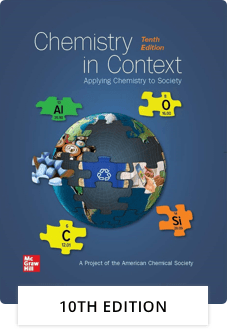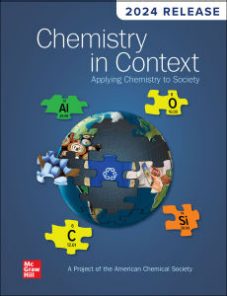Chemistry in Context is intended for chemistry students who are non-science majors. Rather than presenting chemistry in the atoms-first approach, CiC extracts chemistry from students' surroundings. For example, the first chapter is about the chemistry of portable electronic devices and introduces the basics of the periodic table in the context of a smartphone.
The material for each chapter is introduced with an introductory video and provides an opportunity for students to reflect on what they already know about the topics.
There are compelling questions at the beginning of each chapter to hook students, and each chapter ends with a summative activity, conclusion, and list of learning objectives. Throughout each chapter, students are provided opportunities to process what they're learning through activities, real data, diagrams, simulations, 3D molecules, and more.
Tables allow students to connect chemical principles with real-world applications, misconceptions are dispelled using chemical principles, and there are two styles of margin notes: Sprial Notes to refer back to earlier concepts in an easy to navigate way, and Did You Know? to share fun facts.
Understanding chemistry on the molecular level is essential, so the text introduces a variety of ways to represent chemical structures, opportunities for students to practice representing themselves, and 3D rendering so they understand what they're looking at and drawing. The historical context of chemistry is highlighted when appropriate, and the book concludes with a capstone chapter that ties together many themes covered in the book with a forensic mystery to solve.

















